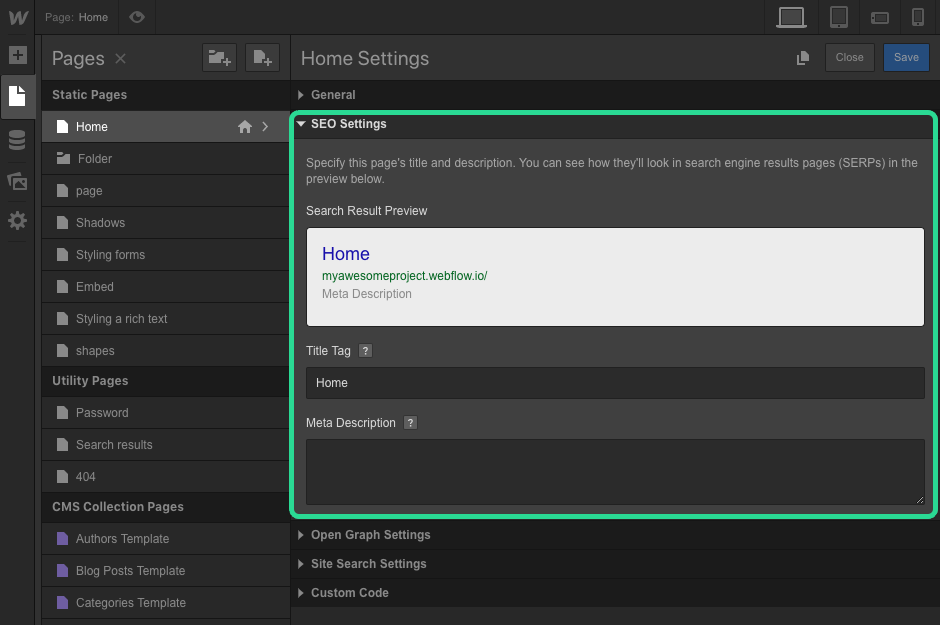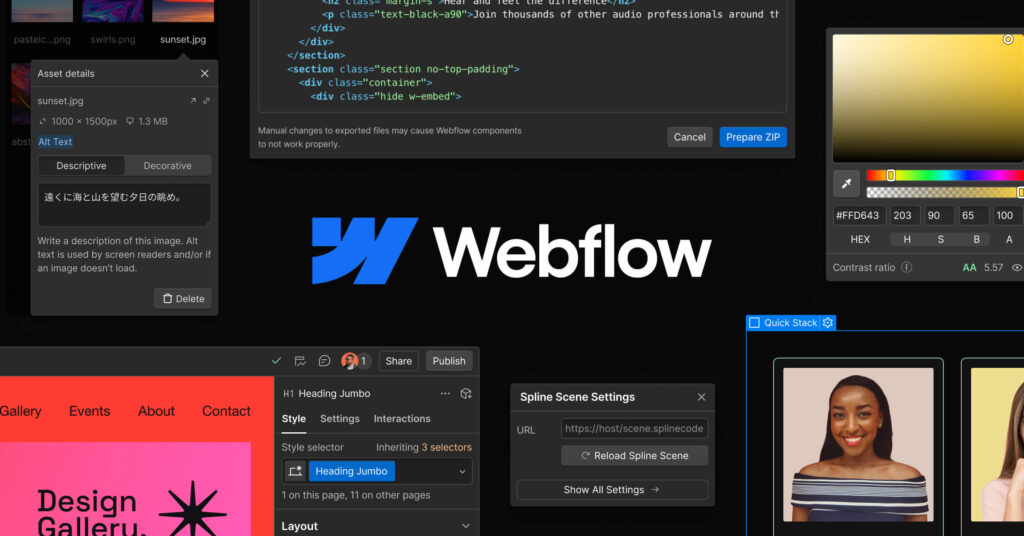In 2025, picking the right website platform isn’t just a smart move but it can make or break your online presence. The web is no longer a sandbox for experiments; it’s the central stage for commerce, content, and credibility. Your website is your brand’s most visible asset, its performance can elevate or cripple your growth. In that context, the question of Webflow vs WordPress becomes a defining one. It’s not just about features, it’s about how a platform aligns with your brand’s ambition and operational DNA. Brands today aren’t looking for a template to edit, they are chasing platforms that scale as fast as they innovate.
They want speed without fragility, control without complexity, aesthetics without compromise. That is the arena where Webflow and WordPress face off. And let’s be clear, this isn’t some recycled debate. It’s a redefinition of what modern websites should be capable of. If you are here to understand how platforms are reshaping digital strategy in 2025, you are in the right place.
Let’s reset the room. This isn’t 2010. WordPress isn’t the scrappy CMS that just launched blogging into the mainstream. It’s a behemoth that powers over 40% of the internet. But that legacy comes with bloat. WordPress is open-source, flexible, but deeply reliant on third-party plugins and themes. It’s robust; but it can be slow, insecure and maintenance-heavy if you don’t know what you are doing.
Webflow, on the other hand, is the new-age builder that has been turning heads for a while. Think of it as a visual powerhouse; a hybrid of design control, CMS capabilities and seamless hosting. It’s not just for designers anymore. Developers, marketers and business heads are taking note. In 2025, Webflow vs WordPress is no longer a designer’s debate; it’s a business decision.
In 2025, design isn’t just about aesthetics but a strategic weapon. The way a brand presents itself online directly correlates with how it’s perceived and engaged with. Design impacts trust. Customization impacts conversion. Your ability to differentiate is deeply tied to the flexibility and power of your platform. That is why the debate around Webflow vs WordPress is especially heated when it comes to design and customization. Both platforms offer paths to visually striking outcomes, but the philosophies behind how they get you there couldn’t be more different.
One gives you total design sovereignty, the other offers extensibility through third-party tooling. What’s at stake here isn’t just how pretty your homepage looks; it’s how fast your team can iterate, how consistently your brand is rendered across devices and how much creative compromise you are forced to tolerate.
Let’s get into the mechanics of each approach.
Webflow gives you design control in its purest form. It’s a canvas with logic. No themes, no cookie-cutter structures. Everything from spacing to animation to breakpoints is under your control. You don’t need to know code; but if you do, it rewards you with flexibility that feels surgical. In 2025, with responsive expectations higher than ever, this level of control is gold.
Customization on WordPress is deceptively accessible. Sure, you can build anything, but you are either stuck wrangling themes or wrestling plugins that rarely play well together. Custom builds are possible but almost always require a developer. Visual builders like Elementor have bridged the gap somewhat; but they’re often bloated and can compromise site speed and stability. In this face-off of Webflow vs WordPress, design agility is where Webflow shines brightest.

Webflow SEO is no longer an afterthought. It’s baked into the core. Canonical tags, schema markups, meta titles and descriptions; everything is accessible natively. Do you want lightning-fast load times, SSL, responsive design and clean HTML? Webflow delivers, out of the box.
That is not a brag; that is just the architecture.
With WordPress, SEO depends on your plugin stack. Yoast, RankMath, All in One SEO; they get the job done but bring along dependencies. And those dependencies can break. Page speed suffers. Code becomes cluttered. You might get results, but you are constantly patching holes. When it comes to Webflow vs WordPress from an SEO standpoint, Webflow’s structured approach is proving to be a quieter, more potent contender.
Web performance in 2025 is non-negotiable. If your website doesn’t load fast, adapt instantly across devices and stay operational without fail; you are not just behind, you are invisible. The conversation around Webflow vs WordPress intensifies dramatically when we factor in ongoing maintenance and performance optimization. These aren’t backend concerns anymore rather they shape user experience and directly influence SEO rankings, engagement metrics and even revenue.
And here’s the kicker: maintaining performance excellence isn’t just about speed anymore; it’s about stability under scale, resilience against security vulnerabilities and minimal technical debt. Brands don’t want tech stacks that need babysitting. They want fire-and-forget systems that work.
Let’s dissect how Webflow and WordPress each handle the growing pressure of modern web performance.
Webflow isn’t just a builder; it’s a full-stack platform. Hosting? Handled. CDN? Built-in. Security? HTTPS by default. In 2025, with Google Core Web Vitals more ruthless than ever, Webflow’s lean codebase and automatic updates make performance seamless. you are not managing a server but you are focused on building experiences. That changes everything.
Yes, WordPress can be fast. But you need the right hosting, caching setup, CDN configuration, image optimization, database tuning and regular plugin audits. you are constantly updating something. That is fine if you’ve got a dev team. But if you are scaling a brand? That maintenance cycle becomes friction. In a Webflow vs WordPress debate, ease of maintenance is increasingly tilting in Webflow’s favour.
Content is still king in 2025 but delivery is the new empire. WordPress started as a blogging platform, content handling is in its DNA. But scale it; add custom fields, user roles, post types, and it starts creaking. Advanced customizations require ACF or similar plugins. The backend starts looking like Frankenstein’s dashboard.
Webflow’s CMS, while not as open-ended as WordPress, is crafted for structured content. If you are publishing dynamic case studies, product catalogs, portfolio entries or landing pages, Webflow handles them with elegance. Relational data, dynamic filters, powerful collections; they’re all native. If you need deep user permissions, complex membership setups or multilingual handling, Webflow can fall short. But for most brands today; it’s not a limitation, it’s a filtration. It forces you to think clean.

No platform thrives in isolation. The strength of a website builder isn’t just in its codebase, it’s in the depth of its ecosystem and the vibrancy of its community. In 2025, the battle of Webflow vs WordPress isn’t confined to features or UI polish but it’s about who can offer a sustainable, long-term ecosystem of support, innovation and evolution.
WordPress has legacy heft. It is a vast library of plugins, themes and developers. But Webflow agencies are pushing boundaries, delivering high-performance builds that are redefining what a lean, efficient team can achieve. If you are hunting for a Webflow alternative, it’s likely because you need something deeply customizable or fully open-source; not because Webflow lacks scale or ambition.
Each community has grown in very different directions: one bloated but mature, the other curated but future-focused. For anyone serious about long-term digital velocity, understanding these ecosystems is non-negotiable. The decision isn’t just about what a platform does today but it’s about who will still be innovating five years from now
WordPress wins on size. The community is vast. The plugin repository is unmatched. If there’s a problem, someone’s solved it. If you need help, someone’s posted a forum thread about it. Agencies and freelancers across the globe know the system inside out. For legacy businesses or complex multi-system integrations, WordPress still holds the edge.
But Webflow agencies are gaining ground. The talent pool is leaner, but sharper. The community is rapidly evolving. With Webflow University, official support, cloneables and expert freelancers, the ecosystem is no longer a limitation. It’s becoming a differentiator. And because Webflow limits scope, what emerges is often best-in-class. If you are seeking a Webflow alternative, it’s likely because you need something radically different; not because Webflow lacks muscle.
So where do we land in this Webflow vs WordPress showdown? It’s not about which is objectively better. It’s about what you value more. If you are building a complex, multi-user portal with third-party integrations at scale, WordPress is still a beast. But if you are creating brand-forward digital experiences; if performance, design control and agility matter; Webflow is no longer the new kid. It’s the benchmark.
At Brandemic, we’re not in the business of playing it safe. We build brands that punch above their weight. For us, Webflow isn’t just a tool but it’s a weapon. And in the right hands, it changes the game. Choose wisely.
In many modern use-cases; yes. Webflow SEO tools are native, fast and optimized for Core Web Vitals. WordPress can compete, but only with the right plugins and meticulous upkeep.
Webflow is leading the shift toward no-code, design-first web development. While it won’t replace WordPress entirely, it’s quickly becoming the go-to for modern, fast and scalable websites—especially for startups and creative teams.
Yes. A skilled Webflow agency can scale your platform with precision; especially if your needs are aligned with visual storytelling, performance and speed.
Yes. Webflow is fully hosted and managed, which means no plugins, manual updates or security patches. WordPress requires regular maintenance, plugin updates and security checks. For most users, Webflow offers a simpler, low-maintenance experience.
Without a doubt. It remains the go-to for complex builds, extensive integrations and open-source flexibility. But for fast-growing digital brands; its dominance is being challenged every day.